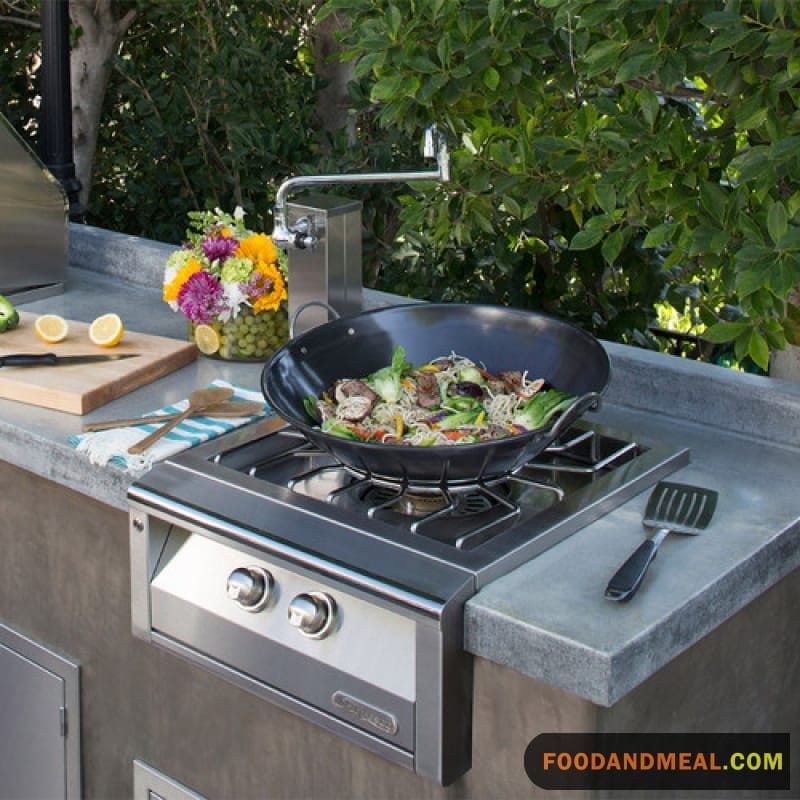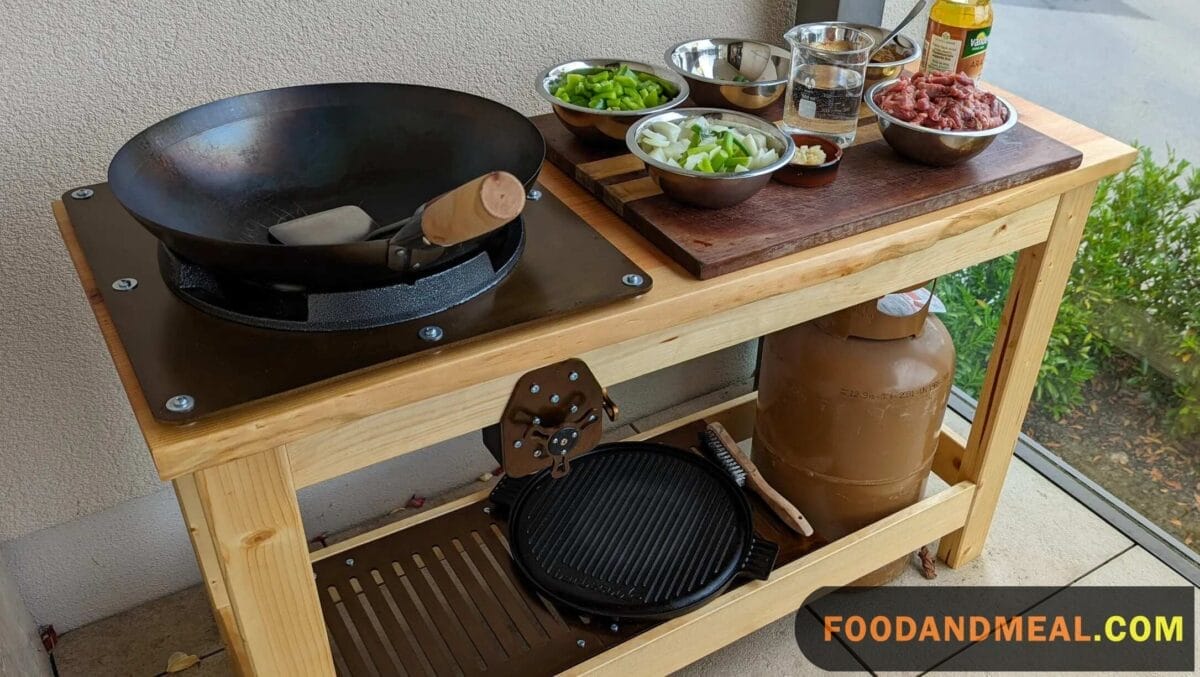Few cooking methods demand as much meticulous preparation as stir-frying. The rapid cooking process in a wok over high heat allows little room for last-minute ingredient preparation, making a well-organized cooking station essential. This is especially crucial when dealing with the swift pace of wok cooking.
Although a home wok-cooking station differs from a professional kitchen setup, certain key elements remain the same. Observing a chef at work on a commercial wok range, you’ll likely notice individual receptacles containing all the necessary ingredients, meticulously sliced, diced, minced, and prepared for quick incorporation. Alongside these, an array of liquid ingredients is neatly arranged in bottles and containers, primed for immediate use.
Additionally, you’ll find a substantial supply of fresh oil, serving dual purposes in both seasoning the wok and acting as the primary cooking medium. A separate basin, equipped with a strainer, is dedicated to collecting used oil for future use. Ample water is on hand for both cleansing the wok between dishes and incorporating moisture into the cooking process. All-purpose dry ingredients, such as salt and MSG, are readily accessible to ensure precise seasoning.
All Set with Solid Ingredients
Before you begin cooking, it’s crucial to have all your ingredients fully prepped and ready to go. This entails preparing aromatics such as garlic, ginger, and scallions, as well as portioning and marinating meats, and par-cooking any necessary proteins and vegetables. Additionally, ensure that all your vegetables are properly cut and ready for use.
Organize these prepped ingredients in various dishes and bowls, keeping them in one convenient location. It can be especially helpful to arrange them in the order specified by the recipe. This way, as you swiftly maneuver through the cooking process, you can easily locate and incorporate each ingredient in the sequence required, ensuring a smooth and efficient cooking experience.
Simplify Your Cooking Routine with Pre-Blended Sauces
Although restaurant chefs are known for creating sauces on the fly, you can streamline your cooking process by pre-blending your sauce ingredients. This preparation method allows you to add all the necessary components to the wok simultaneously, granted they are meant to be incorporated together according to the recipe.

The Importance of Cooking Oil
Having a steady reserve of neutral oil, such as peanut or vegetable oil, is fundamental for nearly all culinary endeavors. Opting for squeeze bottles can facilitate the precise and controlled dispensing of the oil. This method, as highlighted by Sin, proves particularly beneficial for evenly coating the entire inner surface of the wok without the risk of pouring in excessive amounts or needing to swirl the oil more than required.
The Role of Water in Wok Cooking
Although large quantities of cold water may not be necessary, it’s wise to have water readily accessible. Water serves multiple purposes, including rapidly reducing the wok’s temperature to prevent ingredients from scorching. Additionally, it plays a crucial role in preparing various sauces, whether used in conjunction with starch to create a slurry for thickening or to adjust the consistency of overly dense sauces to achieve the desired texture.
While professional chefs often handle these tasks on the spot, it’s practical to measure out specified quantities of water in advance, ensuring a more efficient cooking process. Preparing starch-based slurries in advance also saves time when it’s time to thicken your sauces. Having a small reserve of water beyond the recipe’s requirements is also a smart approach, ensuring you’re adequately equipped for any unforeseen cooking situations.
Essential Dry Ingredients for Seasoning and Thickening
Having small containers of salt, sugar, MSG, and corn or potato starch within reach during cooking can be highly advantageous. This setup enables you to fine-tune seasoning, harmonize flavors, and adjust sauce thickness without the need to interrupt your cooking flow by rummaging through your pantry.
Following Sin’s advice, utilizing small lidded containers, if available, proves practical. These containers not only facilitate easier storage between uses but also effectively shield the contents from dust and other contaminants.

Essential Cooking Utensils
Avoid the frantic search for cooking tools like chopsticks or a spider while your shrimp risk overcooking in hot oil. Ensure that all the required utensils are readily accessible before you begin cooking. Set them out on a tray or dish, at the very least, or better yet, keep the basics within reach in case you require additional tools not explicitly mentioned in the recipe.
The most essential utensils include cooking chopsticks, a wok spatula, a wok ladle, a strainer or spider, and a lid. Remember, the lid serves not only to trap steam but also acts as a valuable safety tool in the event of a grease fire in your wok—use it carefully to smother any flames.
Preparation Stations for Wok Cooking
Stir-fries and other wok-based recipes often involve multiple intricate steps. For instance, you might need to briefly poach some velveted chicken before temporarily setting it aside to stir-fry aromatics and vegetables. Afterwards, you’ll reintroduce the chicken to complete the dish. Alternatively, you could be preparing Sichuan-style toothpick lamb, which entails frying the lamb first and then finishing it with dry spices in the wok.
In each of these scenarios, having designated “landing pads” for various recipe components becomes indispensable. This includes designated spaces for setting aside par-cooked meat, heat-proof containers for straining and storing hot oil, trays to hold used utensils, and serving plates for the finished dish. These designated stations facilitate a smooth and organized cooking process, ensuring that each step is executed seamlessly.
I'm Kelly Atkinson, with a passion for dissecting the world of home goods. My reviews stem from thorough testing and a love for sharing detailed insights. Each piece I write offers a glimpse into my explorative journey, aiming to guide readers to informed choices with authenticity and precision, making every review a blend of exploration and expertise.
